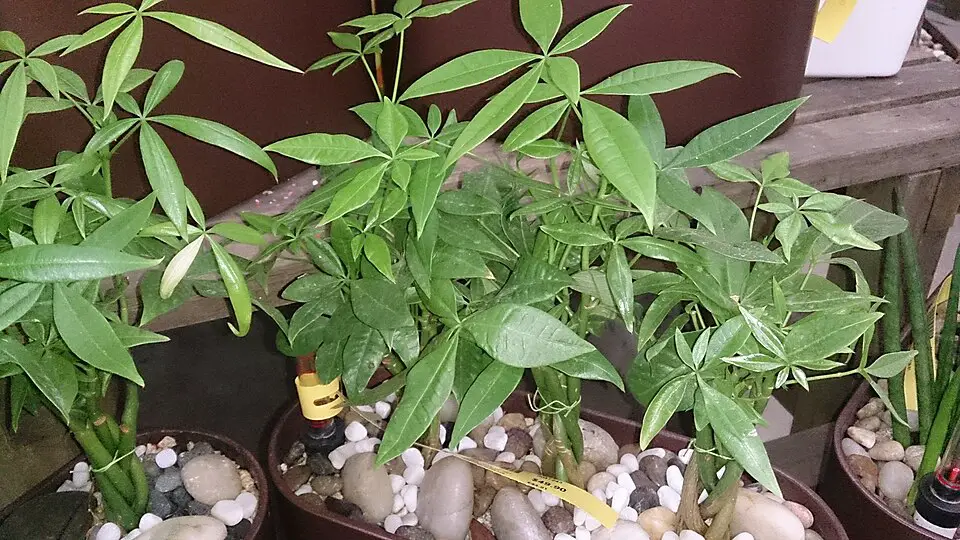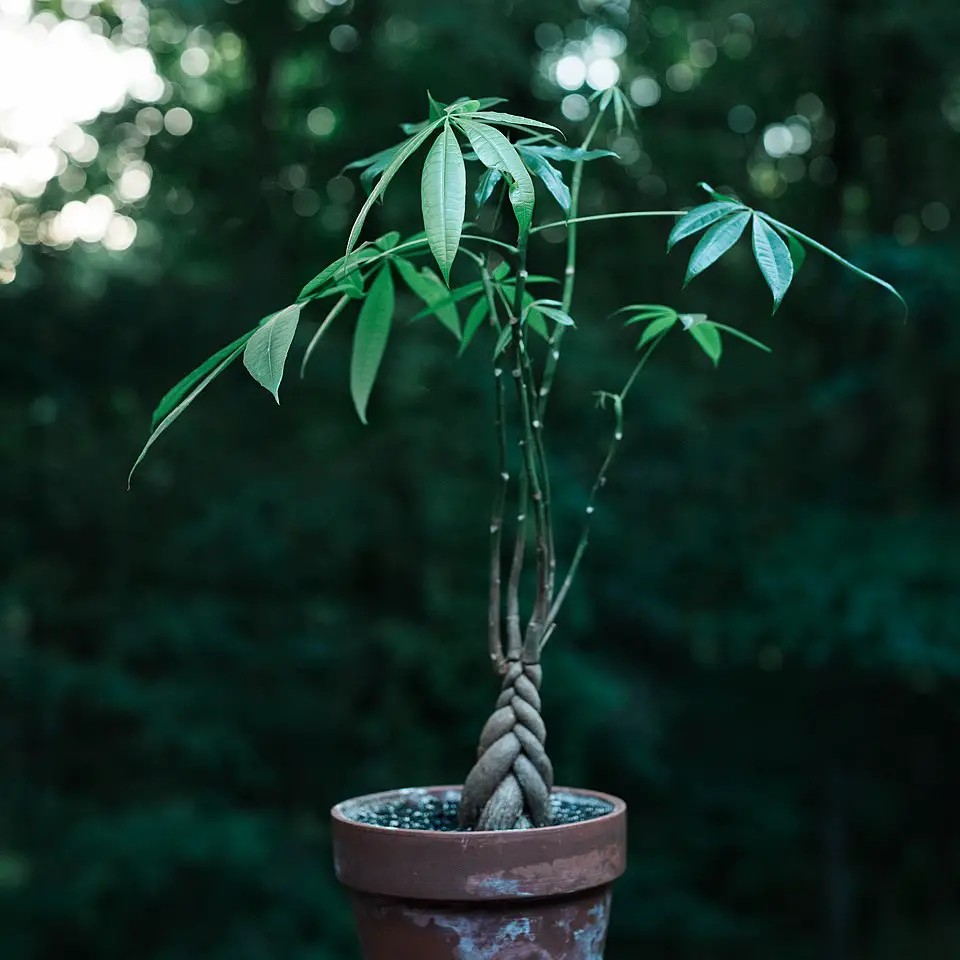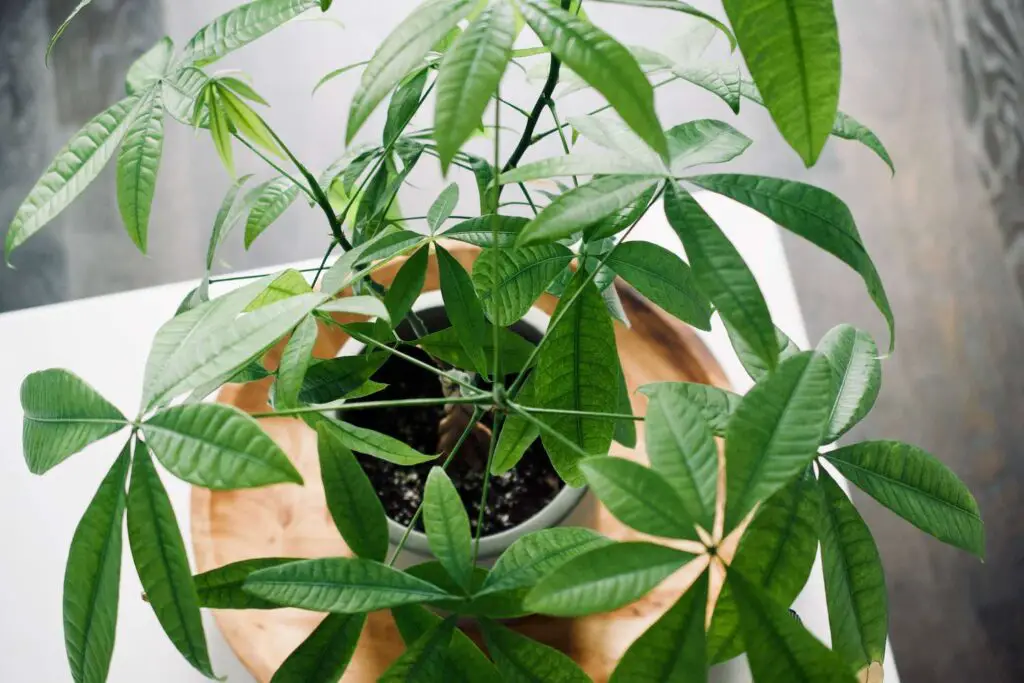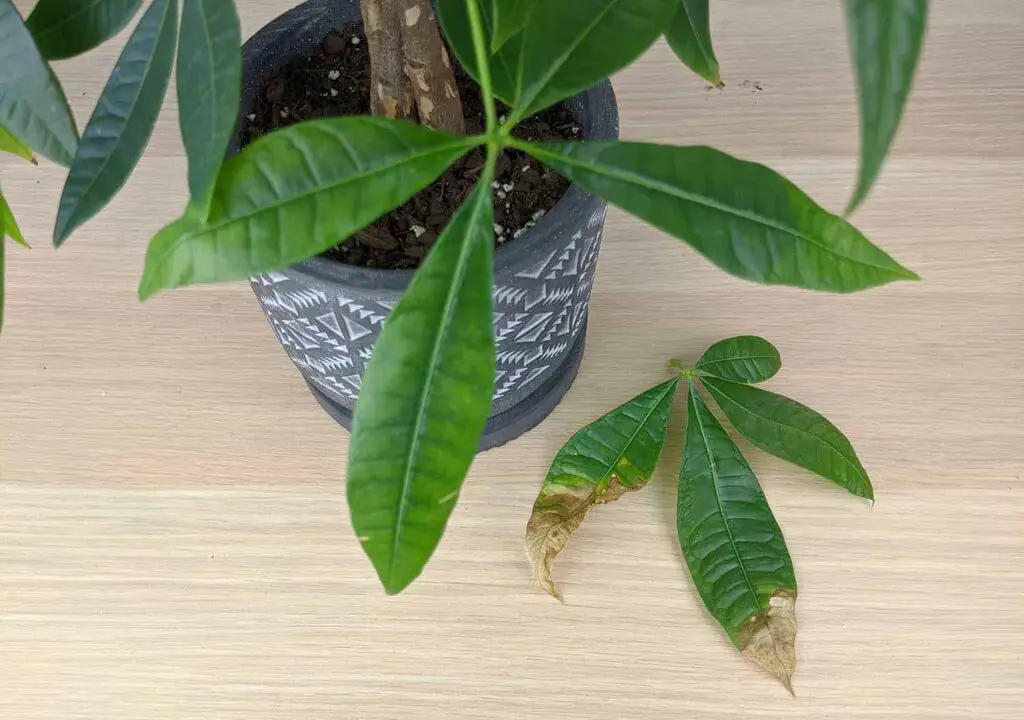The Money Tree, or Pachira aquatica, is a popular indoor plant known for its attractive braided trunk and lush green leaves. Essential maintenance includes proper watering, lighting, and pest management to keep it healthy and thriving.
Understanding the Money Tree
The Money Tree is native to Central and South America, often found in wet, tropical areas. Its unique appearance and reputation for bringing good luck make it a favorite among indoor gardeners. With its characteristic braided trunk and palmate leaves, the Money Tree not only adds aesthetic value to a space but also purifies the air. Understanding its needs is crucial for beginners who want to maintain a vibrant plant.

When caring for a Money Tree, several key factors come into play, including light exposure, watering practices, humidity levels, and soil type. Each of these elements contributes significantly to the plant’s overall health. Below are some essential facts to consider when starting your journey with this enchanting plant.
| Aspect | Details |
|---|---|
| Light | Bright, indirect sunlight is ideal. Avoid direct sunlight as it can scorch the leaves. |
| Watering | Water when the top inch of soil feels dry. Ensure good drainage to prevent root rot. |
| Humidity | Prefers moderate to high humidity. Consider misting or using a humidity tray. |
| Soil | Well-draining potting mix is essential, often with added perlite or sand. |
Light Requirements
The Money Tree thrives in bright, indirect light. Too much direct sunlight can lead to leaf burn, while insufficient light can cause stunted growth. Placing your Money Tree near a window with filtered sunlight is usually ideal. If natural light is limited, consider using grow lights to supplement its needs.
Watering Practices
Watering is one of the most critical aspects of Money Tree care. It is important to allow the soil to dry out between watering sessions. Overwatering can lead to root rot, which is a common issue with indoor plants. To check if your plant needs water, insert your finger about an inch into the soil; if it feels dry, it’s time to water.

Humidity and Temperature Needs
Money Trees prefer higher humidity levels. If the air in your home is dry, especially during winter, consider misting the leaves or using a humidifier nearby. The ideal temperature range for a Money Tree is between 60°F and 75°F. Avoid placing it near drafts or heating vents that could cause temperature fluctuations.
Soil Selection
Choosing the right soil mix is vital for healthy growth. A well-draining potting mix with added perlite or sand helps prevent water retention around the roots. This type of soil allows excess water to escape while holding enough moisture for the plant’s needs. Regularly check the soil condition to ensure it remains suitable for your Money Tree.
By understanding these essential maintenance aspects, beginners can nurture their Money Tree successfully. With proper care and attention, this beautiful plant can thrive in any indoor environment, bringing joy and good fortune to its owner.

Pest Management for Money Trees
Like many indoor plants, Money Trees can be susceptible to pests. Recognizing and addressing these issues early is essential to keep your plant healthy. Common pests that may affect a Money Tree include spider mites, mealybugs, and aphids. Each of these pests can cause damage if not managed effectively.
Identifying Common Pests
Understanding how to identify these pests can help you take action before they severely impact your Money Tree. Here are some signs to watch for:
- Spider mites: Look for tiny webbing on the leaves or a stippled appearance on the foliage. These pests thrive in dry conditions.
- Mealybugs: These appear as small white cottony clusters on stems and leaves. They feed on the plant’s sap, weakening it over time.
- Aphids: Small, soft-bodied insects often found in clusters on new growth. They can cause curling and yellowing of leaves.
Preventative Measures
To minimize the risk of pest infestations, consider implementing these preventative measures:
- Regularly inspect your Money Tree for any signs of pests.
- Keep the plant clean by wiping down the leaves with a damp cloth.
- Avoid overcrowding plants to ensure good air circulation around your Money Tree.
- Maintain optimal humidity levels since many pests thrive in dry conditions.
Treatment Options for Infestations
If you notice an infestation, it is important to act quickly. Here are some treatment options that can effectively manage pests:

- Insecticidal soap: This can be sprayed directly on affected areas to eliminate soft-bodied insects like aphids and mealybugs.
- Neem oil: A natural pesticide derived from the neem tree, neem oil disrupts the life cycle of many pests and can be used as a foliar spray.
- Horticultural oil: This oil suffocates insects and can help manage spider mites and other pests by blocking their breathing pores.
- Water spray: A strong blast of water can dislodge pests like spider mites and aphids from the plant.
Fertilizing Your Money Tree
Proper fertilization is crucial for the health and vitality of your Money Tree. While these plants are not heavy feeders, providing them with adequate nutrients can promote growth and overall well-being. Understanding when and how to fertilize will help ensure your plant flourishes.
Choosing the Right Fertilizer
Select a balanced, water-soluble fertilizer with an equal ratio of nitrogen, phosphorus, and potassium (such as 10-10-10). This type of fertilizer supports healthy leaf growth and root development. Organic options, such as fish emulsion or seaweed extract, can also be effective.
When to Fertilize
The best time to fertilize your Money Tree is during its growing season, which typically runs from spring to early fall. Apply fertilizer every 4 to 6 weeks during this period. In the winter months, the plant’s growth slows down significantly, so it is advisable to reduce or eliminate fertilization during this time.
How to Apply Fertilizer
To apply fertilizer correctly, follow these steps:
- Dilute the fertilizer in water according to the package instructions.
- Water your Money Tree thoroughly before applying the fertilizer solution. This helps prevent root burn.
- Pour the diluted fertilizer directly onto the soil around the base of the plant, avoiding contact with the leaves.
- Monitor your plant for any signs of nutrient deficiency or excess, adjusting your fertilizing schedule accordingly.
Pruning and Shaping Your Money Tree
Regular pruning helps maintain the shape of your Money Tree and encourages healthy growth. Pruning also removes any dead or damaged leaves that may detract from its appearance.
When to Prune
The best time to prune your Money Tree is during its active growing season, typically in late spring or early summer. This timing allows the plant to heal quickly and encourages new growth.
How to Prune
Follow these guidelines for effective pruning:
- Use clean, sharp scissors or pruning shears to avoid damaging the plant.
- Remove any yellowing or brown leaves close to the base of the stem.
- If your Money Tree has become leggy, trim back longer stems to promote fuller growth.
- Aim for a balanced shape by trimming evenly around the plant.
Caring for a Money Tree involves understanding its specific needs and addressing them appropriately. By managing pests, providing proper nutrition, and maintaining its shape through pruning, even beginners can cultivate a thriving indoor garden centerpiece.
2>Repotting Your Money Tree Repotting is an essential part of maintaining a healthy Money Tree. As the plant grows, it may outgrow its current pot, which can restrict root development and limit nutrient uptake. Understanding when and how to repot your Money Tree is crucial for its continued growth. Several signs indicate it’s time to repot your Money Tree: When selecting a new pot for your Money Tree, consider these factors: Follow these steps for a successful repotting process: Even with proper care, you may encounter some issues while growing a Money Tree. Awareness of common problems and their solutions can help you maintain a healthy plant. If you notice yellowing leaves on your Money Tree, this could indicate several issues: If your Money Tree is dropping leaves, it can be distressing. Common causes include: Pests are a common problem for indoor plants. If you see any signs of pests, taking action quickly is vital. Regularly inspect your Money Tree for any unexplained changes in leaf appearance or health. Use natural treatments or insecticides as needed to keep pests at bay. Diseases such as root rot or leaf spot can also affect your Money Tree. Ensuring proper watering practices and maintaining good air circulation can help prevent these issues from occurring. Caring for your Money Tree may vary with the seasons. Here are some seasonal tips to keep your plant thriving throughout the year: The growing season is ideal for providing extra care: <pDuring the colder months, adjustments are necessary: By understanding how to care for your Money Tree throughout the seasons, you can ensure it remains healthy and beautiful all year long. As w ith many popular indoor plants, several myths surround the Money Tree. Understanding the truth behind these misconceptions can help you provide better care for your plant. While many people believe that Money Trees bring good luck and prosperity, it is essential to recognize that their success largely depends on proper care. While they may be seen as symbols of fortune, maintaining the plant’s health through good practices is what truly matters. Some believe that Money Trees thrive best when their soil is kept constantly wet. In reality, these plants prefer well-draining soil and should dry out between watering. Overwatering can lead to root rot, which can be detrimental to the plant’s health. Another common myth is that Money Trees can thrive in any lighting condition. While they are adaptable, they perform best in bright, indirect light. Placing them in direct sunlight or very low light can hinder their growth and health. Along with proper care, creating an ideal environment for your Money Tree can help it flourish. Here are some tips to enhance the growing conditions: Choose a location that receives bright, indirect light. A spot near a window with filtered sunlight is usually perfect. Make sure to rotate the plant every few weeks to ensure even growth on all sides. Although Money Trees can tolerate average indoor humidity levels, they thrive in higher humidity. Consider using a pebble tray filled with water below the pot or a humidifier to maintain adequate moisture levels, especially during dry months. Maintain a consistent temperature between 60°F and 75°F. Avoid placing your Money Tree near heating vents or air conditioning units, as sudden temperature changes can stress the plant. For th ose who wish to delve deeper into Money Tree care, various resources are available: Caring for a Money Tree can be a rewarding experience, offering both aesthetic appeal and potential benefits for your indoor environment. By understanding the specific needs of this unique plant—including light requirements, watering practices, humidity preferences, and seasonal adjustments—you set yourself up for success as a plant parent. Embrace the journey of nurturing your Money Tree by providing it with the right conditions and attention. Recognizing early signs of stress or pests will help you take quick action, ensuring that your plant remains healthy and vibrant. With patience and care, your Money Tree can thrive for many years, becoming a cherished part of your home. Ultimately, whether you believe in its luck-bringing properties or simply appreciate its beauty, the Money Tree serves as a wonderful addition to any indoor garden. With the knowledge you’ve gained about its care and maintenance, you’re now well-equipped to enjoy this stunning plant while creating an inviting atmosphere in your living space.Signs That Your Money Tree Needs Repotting
Choosing the Right Pot
Steps to Repot Your Money Tree
Common Issues and Troubleshooting
Leaf Yellowing
Leaf Dropping
Pests and Diseases
Seasonal Care Tips
Spring and Summer
Fall and Winter
Common Myths About Money Trees
Myth 1: Money Trees Are Lucky and Bring Wealth
Myth 2: They Require Constant Moisture
Myth 3: Money Trees Can Grow Anywhere
Creating the Ideal Environment
Location
Humidity Levels
Temperature Control
Additional Resources for Care
Final Thoughts
